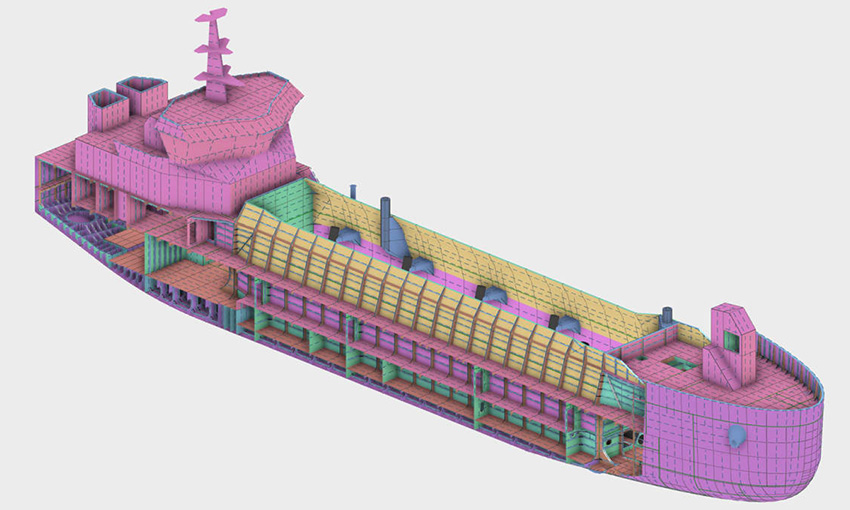CLASSIFICATION society Bureau Veritas has reviewed a 3D design of a 2500-cubic-metre hopper dredger from Damen Shipyards, a step to granting it approval in principle.
The pilot project for 3D model-based class approval is meant to pave the way towards using three-dimensional computer designs as standard procedure to achieve class notation for seagoing vessels.
Vessel steel hull design evaluation based on 3D models in parallel to its classification review process has become possible thanks to the new data exchange format – OCX.
The OCX is an open standard that facilitates data exchange of 3D ship models for class approval. This Open Class 3D Exchange standard has been developed by a consortium of software companies including NAPA and Aveva, together with classification societies including DNV, Bureau Veritas and Lloyds Register.
In collaboration with Finnish software developer NAPA and Bureau Veritas, Damen has presented the three-dimensional design of its trailing suction hopper dredger. All the mission equipment as specified for a client was integrated into the design. Bureau Veritas assessed the steel hull structure to be strong enough and safe to SOLAS standards, with all of the heavy equipment operational.
Damen Engineering Gdansk managing director Kasia Romantowska said seeing the results of this first class approval for a vessel steel hull, we are certain that this is the way to go.
“Development time for the steel construction will be shorter thanks to class approval and us using 3D models only. We have more control over the technical risks embedded into a prototype vessel design process,” Ms Romantowska said.
“It has been the first time that have we closed the 3D data exchange loop between parties. We expect to be able to save significant percent of design time when we integrate this way of working as a standard. The big benefit is the enhanced project team collaboration within the same, fully digital, transparent daily work context, applicable for designers and approval engineer at the same time.”

